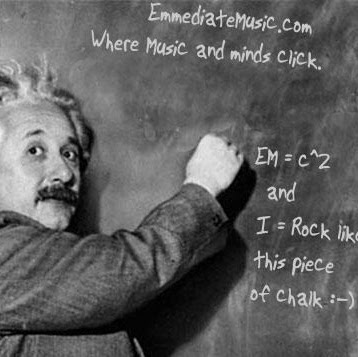Neil H Maclean
age ~69
from Austin, TX
- Also known as:
-
- Neil Hector Maclean
- Neil R Maclean
- Neil Hector Mac Lean
- Neil Hector Mac
- Neil Mac Lean
- Phone and address:
-
5304 Laguna Cliff Ln, Austin, TX 78734
5126929690
Neil Maclean Phones & Addresses
- 5304 Laguna Cliff Ln, Austin, TX 78734 • 5126929690
- Scotts Valley, CA
- 340 Bay Ave, Capitola, CA 95010 • 8314650264
- Tucson, AZ
- Aptos, CA
Work
-
Company:Guild Yule LLP
-
Address:
Isbn (Books And Publications)

Passport's Illustrated Travel Guide to Eastern Caribbean
view sourceAuthor
Neil MacLean
ISBN #
0844290637
Resumes

Staff Ii Engineer
view sourceLocation:
Austin, TX
Industry:
Computer Software
Work:
Vmware
Staff Ii Engineer
Vmware Oct 2007 - Jul 2014
Senior Mts
Dell Nov 2003 - May 2006
Senior Mts
Adaptec Jan 2000 - Jun 2002
Principal Engineer
Oak Technology Feb 1998 - Apr 1999
Senior Manager
Staff Ii Engineer
Vmware Oct 2007 - Jul 2014
Senior Mts
Dell Nov 2003 - May 2006
Senior Mts
Adaptec Jan 2000 - Jun 2002
Principal Engineer
Oak Technology Feb 1998 - Apr 1999
Senior Manager
Education:
Tulane University 1974 - 1978
Bachelors, Bachelor of Science, Electronics Engineering
Bachelors, Bachelor of Science, Electronics Engineering
Skills:
Cloud Computing
Virtualization
Storage
Enterprise Software
Storage Area Networks
Distributed Systems
High Availability
System Architecture
Shell Scripting
Storage Virtualization
Linux
San
Nas
Vmware
Fibre Channel
Perl
Network Attached Storage
Virtualization
Storage
Enterprise Software
Storage Area Networks
Distributed Systems
High Availability
System Architecture
Shell Scripting
Storage Virtualization
Linux
San
Nas
Vmware
Fibre Channel
Perl
Network Attached Storage

Neil Maclean
view sourceName / Title
Company / Classification
Phones & Addresses
President
POLLARD ROAD ASSOCIATION
Civic/Social Association
Civic/Social Association
1935 Dry Crk Rd STE 203, Campbell, CA 95008
Director
TEXAS KEG STEAKHOUSE & BAR, INC
Director, Secretary, Treasurer
Keg Franchise U.S., Inc
Secretary
KEG RESTAURANTS U.S., INC
Secretary
WRI U.S. INC
Secretary,Treasurer,Director
KEG WASHINGTON INC
Us Patents
-
Controller For Atapi Mode Operation And Atapi Driven Universal Serial Bus Mode Operation And Methods For Making The Same
view source -
US Patent:6633933, Oct 14, 2003
-
Filed:Sep 30, 1999
-
Appl. No.:09/410172
-
Inventors:Don Smith - Meadow Vista CA
Ka Kit Ling - San Jose CA
Neil H. MacLean - Scotts Valley CA
Alan K. Ng - Sunnyvale CA -
Assignee:Oak Technology, Inc. - Sunnyvale CA
-
International Classification:G06F 1300
-
US Classification:710 74, 710 2, 710 8, 710 11, 710 14, 710 38, 710 62, 710 64, 710 65, 710 72, 710104, 710105
-
Abstract:A controller for use in an optical storage device is provided. The controller includes a block decoder/encoder for processing data to and from a media of the optical storage device. An ATAPI interface is also provided and is configured to process data and control signals for selectively communicating data to and from the optical storage device during operation in an ATAPI mode. Universal serial bus (USB) logic is configured to process data and control signals for selectively communicating data to and from the optical storage device during operation in a USB mode. The USB logic is configured to utilize data transfer control logic implemented by the ATAPI interface. Accordingly, the one controller can be integrated into either an external peripheral device that communicates over a USB connection in the USB mode, or into an internal peripheral device that communicates over an IDE connection in the ATAPI mode. The optical storage device can be any type of optical storage device, such as, for example a CD-RW, a CD-ROM, a CD-R, a DVD, and the like. Further, the optical storage device can be in the form of an internal or external peripheral device.
-
Data Compression For Recording On A Record Medium
view source -
US Patent:50972618, Mar 17, 1992
-
Filed:Nov 19, 1990
-
Appl. No.:7/615665
-
Inventors:Glen G. Langdon - San Jose CA
Neil H. MacLean - Tucson AZ
Robert W. Miller - Tucson AZ
Mayank R. Patel - Tucson AZ -
Assignee:International Business Machines Corporation - Armonk NY
-
International Classification:H03M 730
-
US Classification:341 51
-
Abstract:A tape drive system includes a compaction scheme whereby the data to be stored on the media is encoded and formatted to take less space along the tape length. The data to be written to tape is placed into equal byte lengths or sets. The sets of data are directed to a plurality of encoders in turn and compacted through an Arithmetic Binary Coding program having two statistic tables per encoder to allow format compatibility with a higher throughput compaction scheme. The compacted sets are sequenced and formed into packets. Then the packets are autoblocked to delineate the packets while providing a single Inter Block Gap per autoblock length and written on the tape. On read, the data is retrieved from the tape and deblocked to separate the packets. Each packet is separated into compacted sets of data. The compacted sets are directed to a plurality of decoders in turn and decompacted.
Lawyers & Attorneys

Neil Maclean - Lawyer
view sourceOffice:
Guild Yule LLP
ISLN:
917758339
Admitted:
1986
University:
Simon Fraser University, 1994; Simon Fraser University, 1994
Law School:
Dalhousie University, LL.B., 1995

Neil Maclean
view source
Neil MacLean
view source
Neil Maclean
view source
Neil Maclean
view source
Neil Maclean
view source
Neil Maclean
view source
Neil MacLean
view source
Neil Maclean
view sourceMyspace
Googleplus

Neil Maclean
Work:
Takorea - Foodrunner
Education:
Marist School
Tagline:
Http://www.soundcloud.com/neil...

Neil Maclean
Lived:
Los Gatos, CA
Work:
The UPS Store - Owner

Neil Maclean

Neil Maclean (Majormaclean)

Neil Maclean

Neil Maclean

Neil Maclean

Neil Maclean
Flickr
Youtube
Classmates

Neil MacLean
view sourceSchools:
Plymouth Canton High School Canton MI 1983-1987
Community:
Rachelle Carrier, Shayna Yager

Neil MacLean
view sourceSchools:
Ridgeview School West Vancouver Saudi Arabia 1958-1962
Community:
Keith Pike, Bruce Byfield, Tony Mcmullen, Mark Brady, Kim Mason

Neil MacLean
view sourceSchools:
West Rouge Public School Toronto Morocco 1976-1980
Community:
Brian Tearne

Neil MacLean
view sourceSchools:
Charlottetown Rural High School Charlottetown PE 1979-1983
Community:
Hayley Pater, Jarrod Wiener, Thomas Spencer, Carol Wright, Donald Mcaulay, Marlene Robison, Jeff Macrae, Martin Paquet, Kim Spencer

Neil MacLean, Plymouth Hi...
view source
Cape Breton Vocational, S...
view sourceGraduates:
Neil MacLean (1963-1967),
John Cogswell (1962-1966),
Bill Kuta (1962-1966),
Philip Cogswell (1969-1973)
John Cogswell (1962-1966),
Bill Kuta (1962-1966),
Philip Cogswell (1969-1973)

West Rouge Public School,...
view sourceGraduates:
Gail Richardson (1959-1967),
Tim Samis (1972-1976),
Elsie Smith (1956-1960),
Neil MacLean (1976-1980),
Mark Davis (1956-1960)
Tim Samis (1972-1976),
Elsie Smith (1956-1960),
Neil MacLean (1976-1980),
Mark Davis (1956-1960)

Ridgeview School, West va...
view sourceGraduates:
Neil MacLean (1958-1962),
Bruce Byfield (1965-1972),
Pat Muir (1960-1966),
Paddy Brown (1953-1959),
Helen Crofts (1999-2003),
Stu Schultz (1975-1977)
Bruce Byfield (1965-1972),
Pat Muir (1960-1966),
Paddy Brown (1953-1959),
Helen Crofts (1999-2003),
Stu Schultz (1975-1977)
Get Report for Neil H Maclean from Austin, TX, age ~69














